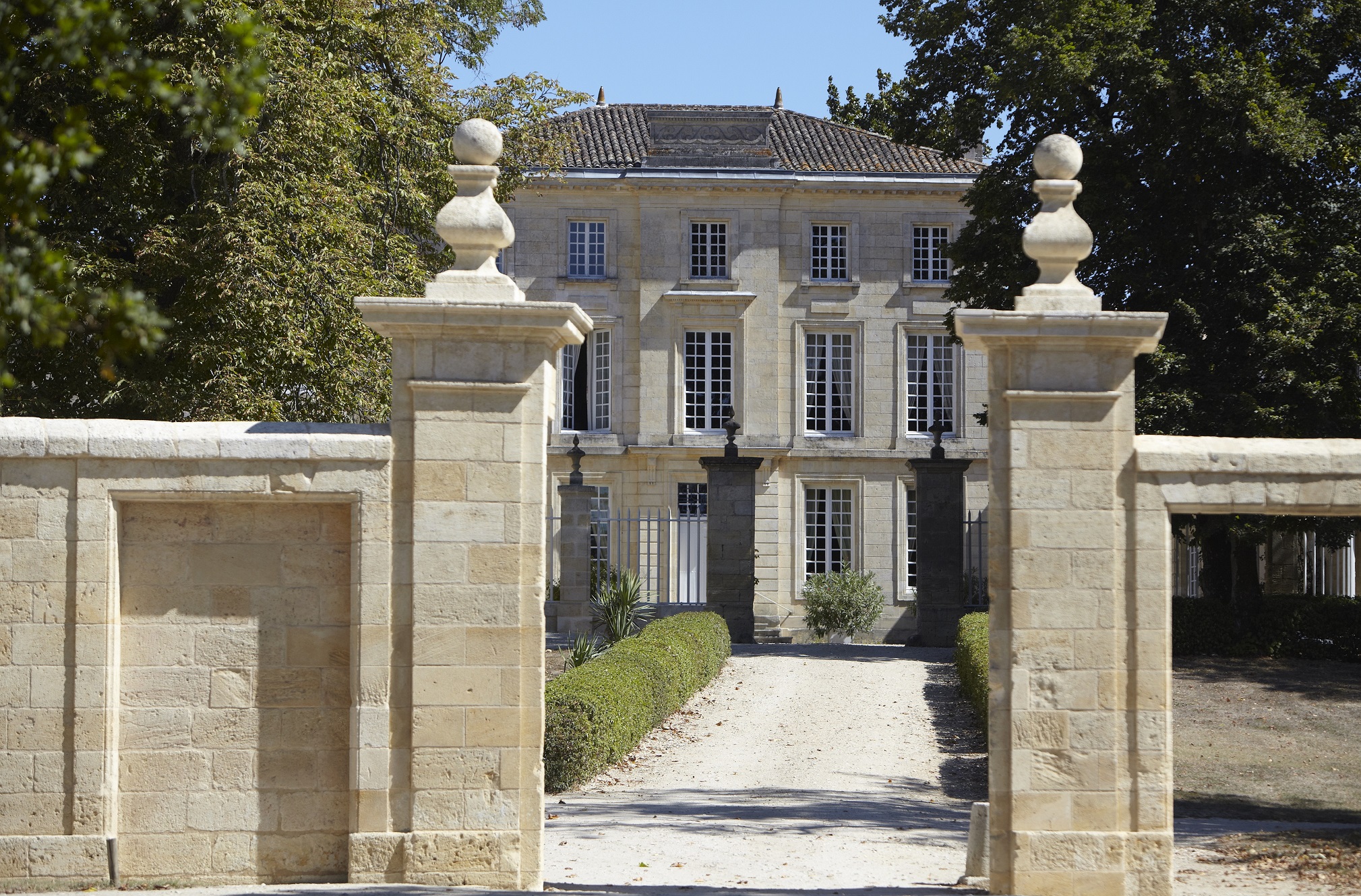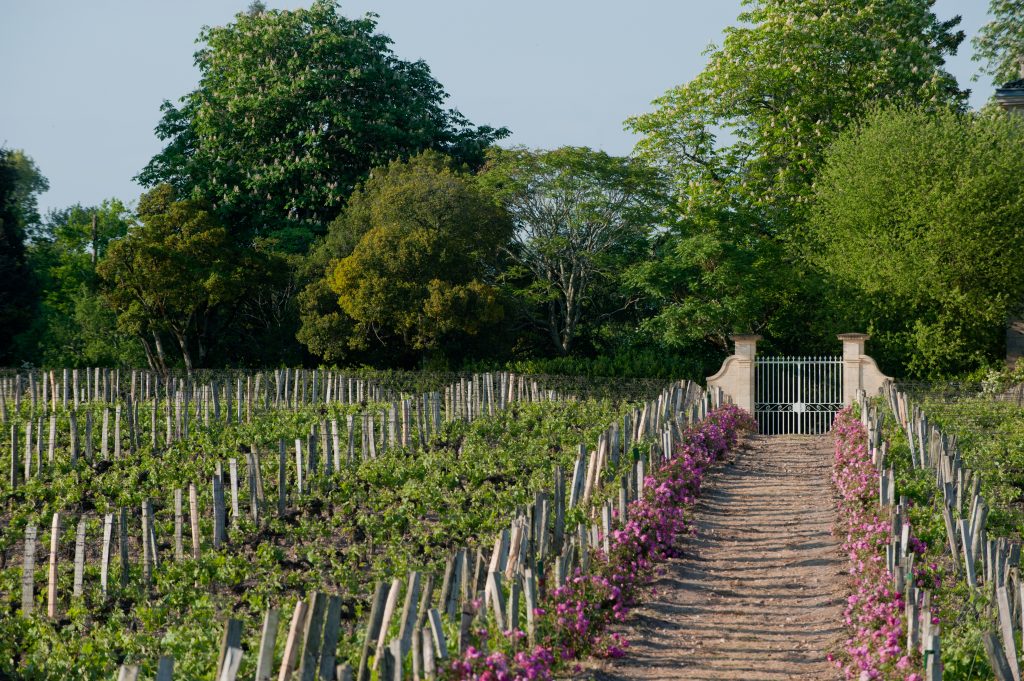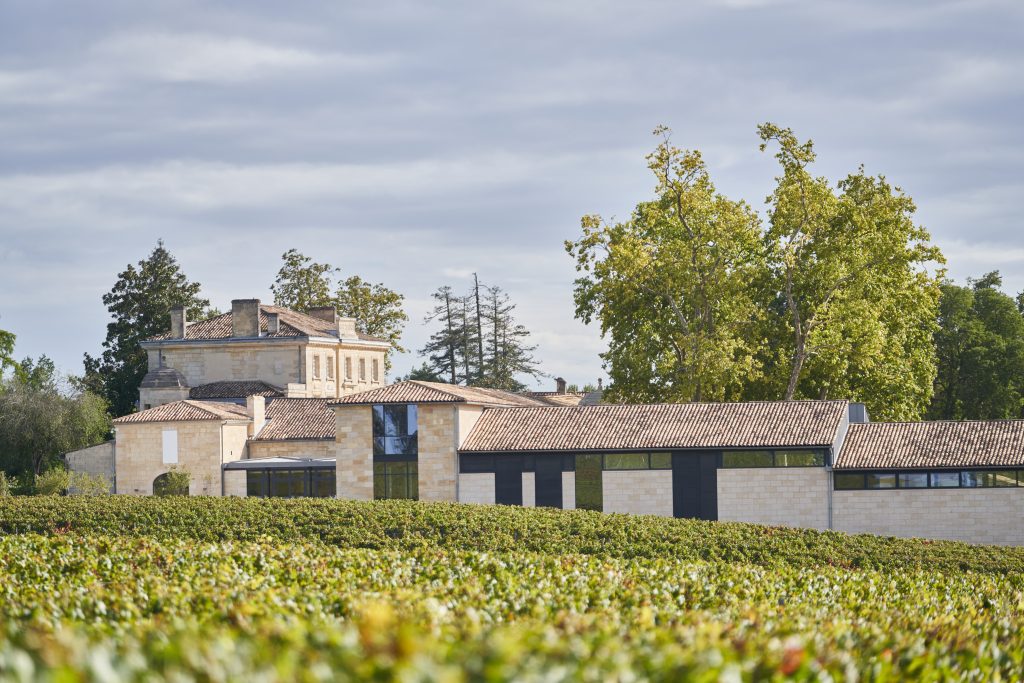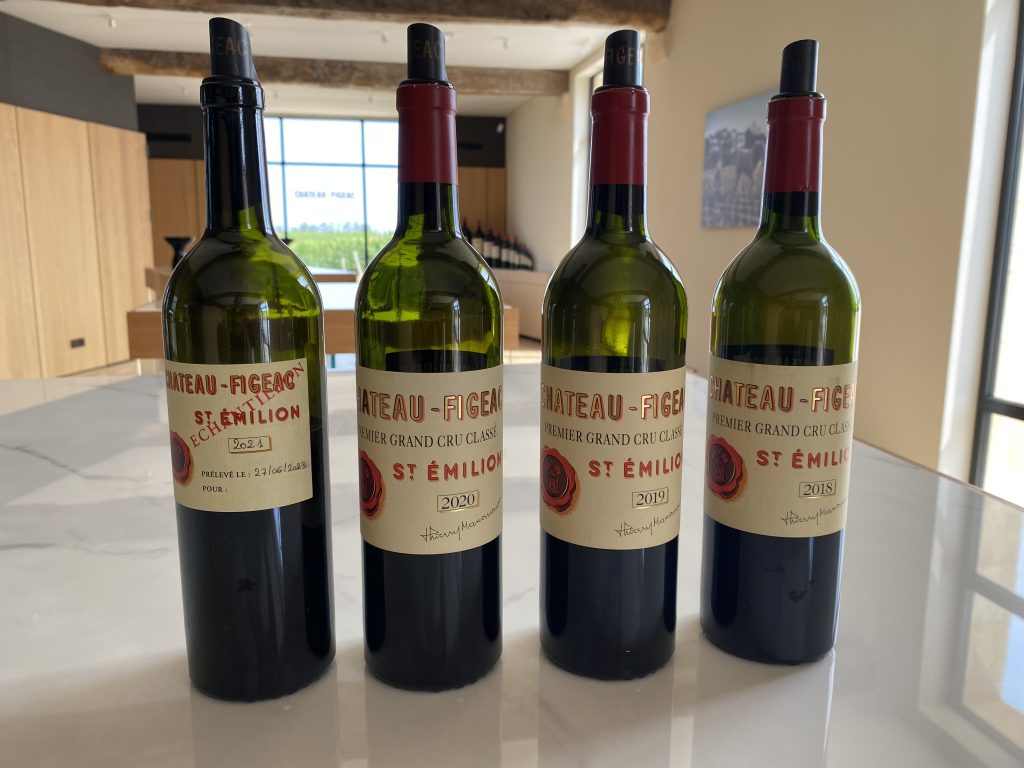Chateau Figeac’s promotion was ‘not a given’
The promotion of Château Figeac to Premier Grand Cru Classé A surprised no one — it was a long time coming and is richly merited. However the Figeac team tells db’s Bordeaux correspondent Colin Hay it was “not a given”.

The promotion of Château Figeac to Premier Grand Cru Classé A should have surprised no-one. It has been a long time coming and is richly merited. But that is in the nature of the Saint Émilion classification. Invariably properties that are uplifted, above all to Premier Grand Cru Classé A, are promoted a full classificatory cycle after most commentators think they warrant it. That is because the commentators invariably base their evaluations on a sense of the property forged in the tasting room. This inevitably privileges the most recent vintages. The classification, by contrast, gauges performance over a full 15 year period – and with a three vintage time-lag. Figeac’s promotion to Premier Grand Cru Classé A in 2022 was based on a tasting of the vintages 2005 to 2019.
There is nothing wrong with this. It makes sense for the classification to be a slow moving creature. If it is to be – and, above all, seen to be – authoritative it needs to display a certain conservatism. But the wait for recognition can seem endless – as the proprietors of Bélair-Monange, Canon and Troplong Mondot are all acutely aware. If their time is to come, as the evidence of recent vintages certainly suggests it might, they will be made to wait for it, just as Figeac did before them.
There is no doubt that Figeac warrants its upgrade. Indeed, for many, the question of its promotion became the litmus test of the credibility of a competitive system of classification for Saint Émilion that has never been uncontroversial and whose recent dramas have acquired the unfortunate habit of spilling over into the courtroom.
It has passed that test and Figeac now rightly joins Pavie at the head of the classification. And with that, a certain unfamiliar serenity seems finally to have descended on the appellation. That said, in Saint Émilion external appearances can be deceptive and one might be forgiven for imagining that the protagonists are simply gathering their strength for future battles to come.
I took the opportunity of the (at least apparent) calm to visit Figeac recently, finding a property enthused and energised by the reclassification but otherwise unchanged by it, a property constantly, tirelessly and very simply focused on the daily tasks of trying to ensure that the best vintage is the next one. I was also lucky enough taste a number of recent and not so recent vintages (with full tasting notes below) and talk to general secretary and co-manager, Blandine de Brier-Manoncourt and managing director, Frédéric Faye about the promotion, the classification, the appellation and Figeac’s place within it today and in the years to come (this interview will appear in the December issue of The Drinks Business).
As de Brier-Manoncourt pointed out, “the recognition of Château-Figeac’s very specific terroir and the reward for a long-term vision and work” and the many messages of good will, congratulations, and support received by the team since it’s promotion “has been fabulous and heart-warming”.
However, she argues that promotion was not a given.
“Promotion in the St Emilion classification – above all to Premier GCC A – is not, as is sometimes assumed, a simple reward for the quality of a handful of recent vintages,” she explained. “In fact, it is the last 15 vintages that were tasted and judged, from 2005 to 2019. And a plethora of information was also provided, concerning all aspects of our activity, from vine-growing methods to pricing and commercial data, as well as environmental measures and R&D, for instance. That makes it all the more rewarding for the family and the entire team at Figeac. We have patiently waited, striving always to improve what we do, and we are now recognized for that collective achievement.”
And while the classification was very welcome and “a great honour,” de Brier-Manoncourt argues that it is “far from the end goal for the estate, but rather a step”.
“For our family, for whom 2022 marked the 130th year at Chateau Figeac, and for our team, it is an invitation to continue to work as we always have – with calm determination and dynamism,” she said. “Our fundamental modus operandi is constant improvement and renewal, so in that way, Figeac always has new projects, each aimed at preserving what is special about our wines while also moving forward.”
For example, 2021 year saw the completion of its impressive new gravity-fed winery, on the back of a £15million investment, with the 2022 vintage the first to be vinified in the new cellar, but the team has a pipeline of project and dedicated R&D, de Brier-Manoncourt notes.
Read Colin’s interview with general secretary and co-manager of Chateau Figeac Blandine de Brier-Manoncourt and managing director, Frédéric Faye in the upcoming issue of The Drinks Business.

Château Figeac – a short profile
2022: the first vintage designated Premier Grand Cru Classé A and, in the words of Hortense Idoine Manoncourt and Blandine de Brier Manoncourt a ‘quintessential Figeac’. It is also the 130th anniversary of the Manoncourt’s acquisition of Figeac in 1892.
1954: the year of the first competitive classification of the wines of St Emilion. Figeac was designated Premier Grand Cru Classé with effect from the 1955 vintage.
1945: the year of Thierry Manoncourt’s typically pioneering decision to make a second wine. This was initially called La Grange Neuve de Figeac but was renamed in 2012, Petit Figeac (with Figeac having acquired the neighbouring Chateau Petit Figeac – and with it the right to use the name for the second wine – in 2002). Around 40,000 bottles are produced each year, in comparison to the 120,000 bottles of the grand vin.
Partner Content
1921: the year from which the oldest vines in the vineyard now date. Over a third of the vineyard has been replanted during the last decade, with the effect that the average age of the vines is now around 35 years. The most recent replanting is informed by a fully comprehensive study of soil, climate and vegetation at the micro-parcel level conducted by a team from l’Université de Dijon in 2018.
Vineyards
All 54 hectares of the estate are classified Premier Grand Cru Classé A. Yet, of those, only 41 hectares (around 275,000 individual plants) are under vine. Extremely rarely for St Emilion, Merlot is in the minority (at around 30 per cent of the planting) with significant volumes of Cabernet Sauvignon alongside the Cabernet Franc. Biodiversity is crucial to Figeac’s philosophy as it is to the identity of the wine. It is preserved in the estate above all through the maintenance of 13 additional hectares, around a quarter of the property, which remain intentionally unplanted. Figeac thus practices a long-standing form of natural agroecology.
Terroir
Figeac’s terroir is famously complex, comprised as it is of a patchwork of plots grouped around three Gunzian gravel outcrops of flint and quartz over a blue clay subsoil. . Its diversity of micro-climates are influenced by landscape, exposition, proximity to vegetation and the stream running through the heart of the estate and provide the perfect terroir for all three of the varietals planted in the vineyard – Cabernet Franc, Cabernet Sauvignon and Merlot.

The new winery
Completed in 2021 and designed by the Bordeaux architects A3A, Figeac’s new winery has been so sensitively envisaged that its 5000 square metre surface area, comprising two underground levels and quadrupling the working space for the winemaking team, feels so timeless that is as if it has always been there. It blends elegantly into the landscape and has a Tardis-like presence – massive internally and yet seamlessly integrated into the château buildings and the vineyard from the outside. As much a technical triumph as an architectural model, the new vat room give to the wine-making team an added precision – with intra-parcel vinification and around a 40 per cent increase in the number of separately vinified lots from which the grand vin is assembled.
Varietals
Cabernet Sauvignon provides structure and ageing potential. It brings a characteristic graphite minerality, alongside Szechuan peppercorn, mint and blackcurrant notes to the final blend. It was planted by Thierry Manoncourt, so often the pioneer and the first to plant it in significant quantities in St Emilion.
Cabernet Franc brings elegance, refinement and Figeac’s delicate signature florality. It is characterised at Figeac by notes of cherry, white blossoms and carnations.
Merlot brings accessibility in youth, roundness, smoothness and a certain voluptuous quality above all to the mid-palate. It also reinforces the floral complexity of Figeac, imparting notes of peony and highlighting the graphite minerality of the terroir.

Tasting notes
Figeac 2021 (Saint Émilion; 40% Cabernet Sauvignon; 31% Cabernet Franc; 29% Merlot; pH 3.65; 13% alcohol; tasted just before bottling at the property in late June 2023). Even at this nascent stage, we have incredible aromatic complexity. Violets. Lavender. Mimosa. Black cherry, brambles, and mulberries. Raspberry compote. A little wild gamey-ness. Cracked black peppercorns and that signature graphite of Figeac. Walnut shell and walnut oil. A lovely wild floral element – hedgerow spring flowers. And a distinct saline note. On the palate this is sinuous, bright and dynamic with a lovely forward momentum. It is tight and compact but without the density of the greatest of recent vintages. The tannins are incredibly soft, the mid-palate impressively tight and compact, with lots of detail and layering, reinforcing the impression of great complexity from the nose. There is (perhaps unsurprisingly given its composition) something almost Médocain about it; we could almost be in some of the more hallowed parts of Pauillac! Class and quality combined. Don’t underrate this vintage and above all this wine. The first vintage to be made entirely in the new wine-making facility and one can sense already the slight gain in detail and precision. 97.
Figeac 2020 (Saint Émilion; 37% Merlot; 32% Cabernet Franc; 31% Cabernet Sauvignon; aged in new French oak barrels for around 16 months; a final yield of 37 hl/ha, though the Cabernet Sauvignon yielded only 30 hl/ha; pH 3.7; 13.9% alcohol; tasted at the property in late June 2023). A little tight and closed at first. But very refined and gracious. On the nose, this has rather classical notes of leather and graphite, chocolate and violets, crushed stones, a touch of both cedar and acacia and a hint of clove. There is also a suggestion of patchouli, dried rose petals and garrigue herbs – very redolent of the vintage. Fresh but not excessively so. On the palate, this is bright, dynamic, energetic, lively and engaging with an impressive sapidity and lift despite the no less impressive depth, concentration and sheer density of the compact mid-palate. Black cherry; mulberry; blackberry; a little bilberry. A hint of coffee bean too. Broad, rich, hyper-structured and with grippy, fine-grained tannins pulling the fruit back towards the spine; ultra-svelte in texture and caressing. Subtle. Each cépage brings something distinct – aromatically, structurally and texturally – and yet what is most impressive about this wine is its seamless integration and the sense of natural harmony that it exudes. An excellent Figeac, at least on a par with the 2019 and 2018. Archetypally Figeac, but so very different from the 2021. The highlight of this wonderful tasting. 99.
Figeac 2019 (Saint Émilion; 34% Cabernet Sauvignon; 36% Cabernet Franc; 30% Merlot; a final yield of 32 hl/ha; pH 3.70; 14.1% alcohol; tasted at the property in late June 2023). This simply screams ‘Figeac’, but oh so elegantly; very expressive aromatically – much more so than the 2020 at this stage. Opulent, gracious, taut, tender and enticing. The similarities with the 2009 and, indeed, the 1990 are evident. There’s a touch of wild sage. Red and black cherry, mulberry. Acacia and cedar, graphite and pencil shavings. Very ‘Cabernet Franc’ fresh, with delightful blackcurrant leafy undertones. Texturally, the finest of the entire tasting. Broad and yet gracious, very elegant and svelte and all constructed around a profound and at this stage still almost impenetrable graphite core. Utterly classy with lovely juicy gobbets of fresh sapidity. Saline. A little less broad than the 2020 and more tight and compact as a consequence. There’s slightly less sense of grip as the wine is less ample, but it is still structured fabulously by the tannins. Long and impressive. Rolling and rippling, with waves of freshness on the gently tapering finish. 98+.
Figeac 2018 (Saint Émilion; 37% Merlot; 30% Cabernet Franc; 33% Cabernet Sauvignon; aged in new oak barrels for 16 months; pH 3.7; 14% alcohol; tasted at the property in late June 2023). I’ve tasted this a few times since en primeur and it’s now much more expressive than it was – having passed through a rather closed and introvert phase. It’s very expressive now – and very expressive of the vintage. ‘Solaire’ as the French would have it – sunny and radiant. But authentically and profoundly Figeac too with all that walnut, graphite and cedar. It’s floral as well. Patchouli, dried rose petals, gladioli (as noted en primeur). All of that returns on the palate, with a lovely twist of fresh white pepper. Rich, broad, a little more alcohol, but you wouldn’t notice other than in the context of the vertical here. More spicy than the more recent vintages, with a touch of liquorice root to accompany the green Szechuan peppercorns, cinnamon and clove. It feels sunny. But there’s loads of Figeac character here. The tannins, especially when one considers that Cabernet makes up nearly two-thirds of the blend for this wine, are immensely soft and seductive and the overall impression is of a golden fist in a velvet glove. Dark berry fruit – blackberries, brambles, blueberries and mulberries – with loads of graphite, a touch of cedar and the vibrant intensity of the first summer rain that breaks the drought. That lovely floral element again – violets, irises and gladioli (Dame Edna Everage would have loved this!). Lots of good choices were made here in the temporary wine-making facility put in place whilst the new chai was built. The wine is fresh and to have kept it to 14% alcohol is impressive (the 2016 was already at 13.9%). 97.
Figeac 2009 (Saint Émilion; 35% Cabernet Franc, 35% Cabernet Sauvignon, and 30% Merlot; a final yield of 40 hl/ha; tasted at the property in late June 2023). A brilliant wine that is not far off having the potential of the 1990. This has more austerity, more harmony, more balance and more finesse than almost all of the ostensibly great 2009s I’ve tasted recently from either left or right bank. The heat of the summer can produce in this vintage a certain excess; here it just produces gracious elegance and harmony – not even opulence. Seamless classicism. It’s already wonderfully integrated, sensual, complex, long and refined with that layered complexity that comes from the tripartite combination of Cabernet Sauvignon, Cabernet Franc and Merlot and, above all, the wondrous cedar and leafy blackcurrant aromatics that come from the Cabernet. A wine that seems to herald the great vintages to come – 2016, 2018, 2019, 2020. 97.
Figeac 1990 (Saint Émilion; tasted blind over dinner in the Château in late June 2023; 13% alcohol). Incredibly fresh and incredibly youthful. Perfect balance and harmony. Glorious aromatics. This has freshness, levity, florality, multi-cépage-complexity, roundness, richness (but in moderation) and a glorious integral finesse. Just sublime. The epitome of Figeac and a massive tribute to the sheer quality not just of the terroir, but also of the capacity to grow the right things on it. I cannot think of a St Emilion from the 1990s I have enjoyed as much. 98.
Figeac 1966 (Saint Émilion; tasted blind over dinner in the Château in late June 2023). From a vintage described by Michael Broadbent as a ‘lean, long-distance runner’. He must have been thinking of Figeac! Very fresh and aromatically expressive too. A little touch of coconut oil, a little herbal hint and bright fresh fruit scents even now. Incredibly youthful for its age – you’d probably place this at least a decade later if you didn’t know that it was Figeac (of course, I did, so it was rather easier to pick this as the ‘world cup’ vintage). A study in the sheer quality of the terroir. 94+.
Tasted en primeur
Figeac 2022 (Saint Émilion; 35% Merlot; 34% Cabernet Franc; 31% Cabernet Sauvignon; pH 3.7; 14% alcohol; tasted en primeur at the property). It is so exciting to taste this, the first vintage of Figeac as premier grand cru classé A. One could not have higher expectations and they are all exceeded. This is truly resplendent. It is gentle, so gentle; gracious, so gracious and all in complete harmony. It is limpid in glass, crystalline and glossy in texture. What is perhaps initially most striking is the cool, almost Médocain, Cabernet purity and elegance that is so emblematic of this vintage. We have white flowers, saffron, jasmine and amazing fruit complexity – first black cherry, red cherry, blueberry, cassis, redcurrant. Aeration in the mouth reveals loganberry, raspberry, blackberry, bramble and the intense sapid juiciness of each. The tannins are gloriously refined too, absolutely at the level of Cheval Blanc. And this is brilliantly fresh. Vibrant and so vivid. I’ve never tasted a more complete wine from Figeac and the quality of the tannins is at a new level for me. It is so fitting that everything comes together in this vintage. The best ever from here I am sure and how pleasing it feels to write that. 98-100.
Related news
Strong peak trading to boost Naked Wines' year profitability




